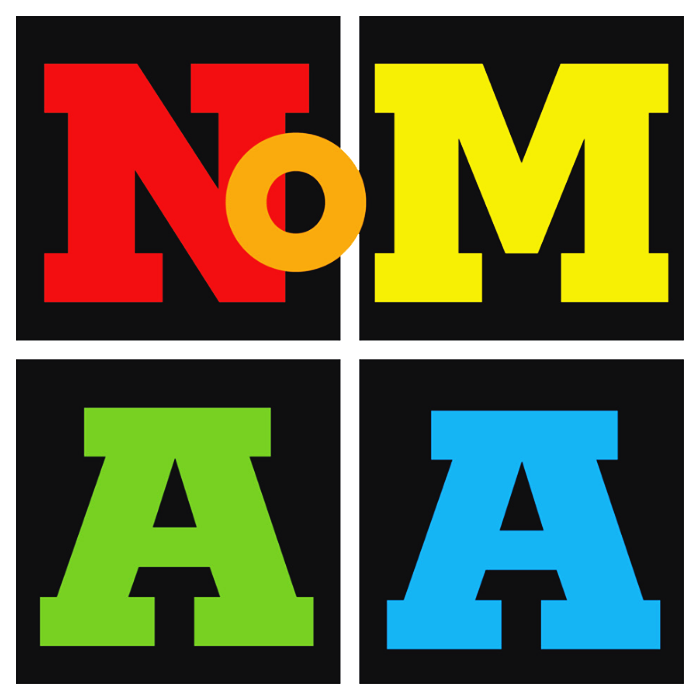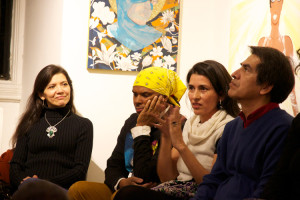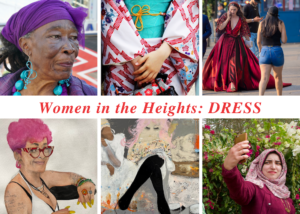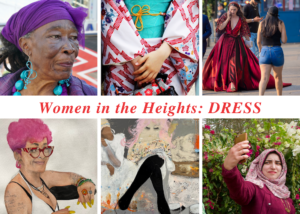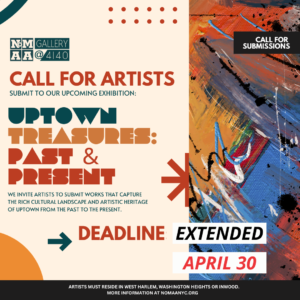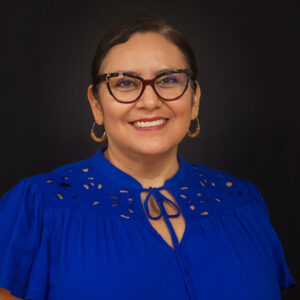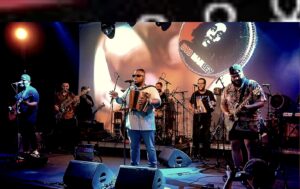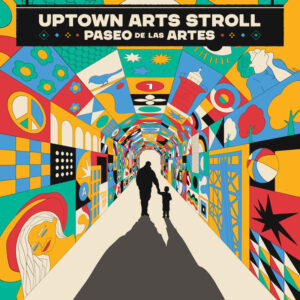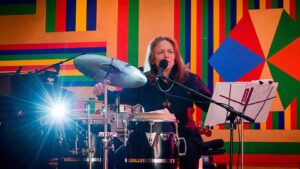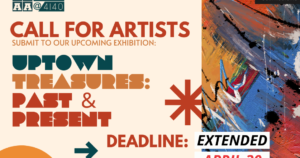Story and photos by Sherry Mazzocchi. Reprinted with permission from The Manhattan Times.
The lives of artists and immigrants resonate with each other.
They often consider themselves as outsiders who don’t feel at home anywhere and use creativity and resourcefulness to survive.

The current show at Northern Manhattan Arts Alliance (NoMAA), “Immigrant Too,” features the work of local artists who are all from different countries. This past Thurs., Oct. 31st, a discussion explored the overlap between being both an immigrant and an artist.
Led by curator Gabriel de Guzmán, it was a frank and intimate conversation about the struggles and complexities of both.
In the work Fourth of July, two Mexican men look at fireworks through a hole in a border fence. The fence’s red stripes and the white sparks against blue sky resemble an American flag.
Artist Felipe Galindo said he created the work on a deadline. At the time, he wasn’t sure if he wanted them to cross. “They are contemplating—they are not crossing,” he said.
But in an animated version of the work, a coyote appears and says that for a certain amount of money they can get in a truck and cross the border. The truck resembles a slave ship with skeletons. Coyotes, or smugglers, often put a lot of people in trucks, and sometimes abandon them and the people die, said Galindo.
They decline the coyote’s offer. Instead, they find a boat, the Flor de Mayo. It has no oars, so the women extend their traditional Mexican dresses like sails. It arrives in Manhattan.
“I gave them the image of the Mayflower,” he said. “So we are all in the same boat.”
Immigrants and artists are often in the same boat when it comes to money.
Renata Stein had financial problems when she first arrived in the U.S. Art supplies were too expensive so she used found objects in her work. “Being able to use detritus was a lifesaver,” she said.
Immigrants are resourceful, said Angela Fernández, Executive Director of the Northern Manhattan Coalition for Immigrant Rights (NMCIR). Many arrive with little money or knowledge of the language. “The level of creativity required to survive can be compared to an artist’s level of creativity,” she said.
Yet creativity and resourcefulness can only take you so far. Many artists and immigrants have low incomes, which makes gentrification a threat. Escalating rent drives both types of people out of neighborhoods they once called home. “New York is a great city,” said Sandra García-Betancourt, NoMAA’s Executive Director, “if we can afford it.”
Artists and immigrants both enrich the greater culture, but in different ways, said Rosa Naparstek. Immigrants are outsiders who are usually trying to find a way in. Yet artists tend stand apart from society.
“Each has a sensibility that has something to contribute to the collective,” said Naparstek, “An immigrant tries to acclimate and assimilate. But they are also bringing in a cultural diversity of ideas that enrich.”
Like many immigrants, artists often don’t feel at home where ever they are. It is a kind of limbo, said Betancourt. “As an artist, do you feel that you belong to any place? Do you have to?”
Artists change perspectives, and so do immigrants when they cross borders. Yael Ben-Zion said her identity shifts when she goes back and forth from Israel to the U.S. “It’s very liberating, actually, because I feel that I don’t belong. It gives me the freedom to do whatever I want.”
Fernández said immigrant’s rights are under threat and thousands of families feel the pain of having a loved one detained or deported. She talked about the Dream 30, a group of immigrants who left the U.S. and returned. While some of them have been released, at least one has been deported. Others are sitting in detention, and have commenced a hunger strike to call attention to their plight.
Not all immigrants are activists and not every artist is political. Yet sometimes the politics is not overt.
Andrea Arroyo’s abstract images reflect the hundreds of dead people found at Arizona border crossings each year.
People don’t always see her activism, she said, but social justice issues inform her work.
“As an artist you just try to create the best work. Sometimes they don’t marry. Sometimes they do.”
It is important to be an activist, said Naparstek, but fundamental change needs to happen at a deep level.
Just going to demonstrations isn’t a solution, she said.
”It has not satisfied the profound changes that need to happen in all of us—to start the kind of change that will actually alter the consciousness that can alter the way we are in the world.”
Among the artists included in the “Immigrant Too” exhibition are Grace Aneiza Ali, Andrea Arroyo, Javier Ávila, Yael Ben-Zion, Pablo Caviedes, Leandro Cruz, Francisco Donoso, Alexis Duque, Felipe Galindo, Peter J. Hoffmeister, Rafaela Luna, Javier Maria, Michelle Melo, Joiri Minaya, Rosa Naparstek, Lina Puerta, Renata Stein, and Hidemi Takagi.
The exhibit is at the NoMAA Gallery, located at 178 Bennett Avenue (at 189th Street), 3rd Floor, New York, NY 10040 until November 21st, 2013.
The gallery hours are Mon–Fri, 11 a.m. – 6 p.m., or by appointment (please call +1 212 568-4396).
